A Guide To Types of Ships
Cargo ships are classified into various types based on purpose, size, type of cargo etc.
The economic factor is of prime importance in designing a merchant ship. Every owner wants maximum return on their investment, which means a ship’s construction not only depends on the current economic necessities, but the factor of future adaptability also plays a part.
From the preliminary design of a vessel due for construction, the following information can be obtained:
- Dimensions
- Displacement
- Stability
- Propulsive characteristics and hull form
- Preliminary general arrangement
- Principal structural details
A layout of the various ship types and their subdivisions will be listed, covering a wide range of all vessels in operation.
The type of ship plays an important role in deciding the above-mentioned parameters.
Related Read: What are Ship Prefixes for Naval and Merchant Vessels?
Types of Ships
Ships are mainly classified into the following types:
1. Container Ships
2. Bulk Carrier
3. Tanker Ships
4. Passenger Ships
5. Naval Ships
6. Offshore Ships
7. Special Purpose Ships
1. Container Ships
As the name suggests, a vessel structured specifically to hold huge quantities of cargo compacted in different types of containers is referred to as a container vessel (ship).

Types of Container Ships On Basis Of Sizes:
- Panamax
- Suezmax
- Post-Panamax
- Post-Suezmax
- Post-Malaccamax
Learn about different types of container ships.
Refrigerated Container Ships: These Vessels carry refrigerated cargo (mainly in refrigerated containers)
2. Bulk Carrier Ships
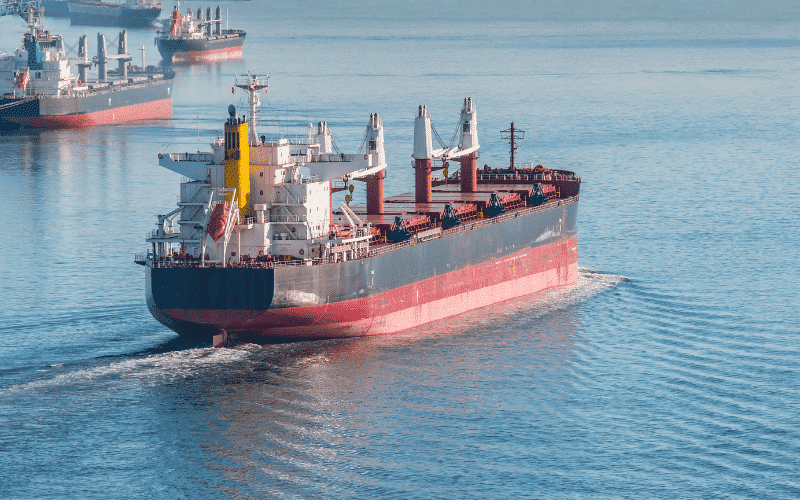
- Conventional bulkers
- Geared bulker
- Gearless bulker
- Self-discharging bulker
- Lakers
- BIBO
Read types of bulk carriers in detail here
Some other forms of dry cargo are:
- Tramps: A boat or ship engaged in the tramp trade does not have a fixed schedule or published ports of call.
- Cargo Liners: An ocean liner is designed to transport passengers from point A to point B. The classic example of such a voyage would be a transatlantic crossing from Europe to America.
3. Tanker Ships
Tanker ships are specialised vessels for carrying a large amount of liquid cargo. Tankers are further sub-divided into different types based on the cargo they carry.

Read in detail – What are tanker ships?
The main types of tankers are:
Oil Tankers: Oil tankers mainly carry crude oil and its by-products.
Liquefied Gas Carriers: A gas carrier (or gas tanker) is designed to transport LPG, LNG or liquefied chemical gases in bulk.
Chemical and Product Carriers: A chemical tanker is a type of tanker ship designed to transport chemicals and different liquid products in bulk
Other types of tankers: Some other types of tankers are juice tankers, wine tankers, integrated tug barges etc.
Based on their size, tankers are further divided into various types such as:
- VLCC
- ULCC
- Panamax
- Aframax
- Suezmax
- Capesize
- Handymax
- Lighters
- Handy
4. Roll-on Roll-Off Ships

- Pure Car Carrier (PCC) and Pure Car and Truck Carrier (PCTC) RoRo Ships
- Container Vessel + Ro-Ro (ConRo) Ship
- General Cargo + Ro-Ro Ship (GenRo) Ships
- RoPax
- Complete RoRo Ships
5. Passenger Ships
Passenger ships, as the name suggests, are mainly used for transiting passengers.

They are mainly classified into:
Ferries – Vessels used for transiting passengers (and vehicles) on short-distance routes are called ferries.
Cruise Ships – Mainly used for recreational activities, cruise ships are like luxurious floating hotels with state-of-the-art facilities.
They are further classified as:
- Liners, Cruise Ships, Pilgrimage Ships
- Cross Channel Ferries, Coastal Ferries, Harbour Ferries
- Arctic and Antarctic Cruises
Learn more about different types of passenger ships.
6. Offshore Vessels
Offshore vessels mainly help in oil exploration and construction jobs at sea. Offshore vessels are of several types.

Some of the main ones are:
- Supply Ship: Vessels that supply to offshore rigs
- Pipe Layers: Vessels engages in laying pipes and cables
- Crane Barges or floating cranes: A crane vessel, crane ship or floating crane is a ship with a crane specialized in lifting heavy loads
- Semi-submersible Drill Rigs: These are Mobile Offshore Drilling Units to make stable platforms for drilling oil and gas
- Drill Ships: A drillship is a merchant vessel designed for use in exploratory offshore drilling of new oil and gas wells or scientific drilling purposes
- Accommodation Barges: Could be a stand-alone floating hotel or can include accommodation as well as space for Cargo
- Production Platforms: To extract and process oil and natural gas or to temporarily store product until it can be brought to shore for refining and marketing
- Floating Storage Unit (FSU) – Floating vessel mainly used for storage of oil and by-products.
- Floating Production and Storage Unit (FPSO): A floating production storage and offloading unit is a floating vessel used by the offshore oil and gas industry for the production and processing of hydrocarbons and the storage of oil
- Anchor handling vessels – These are used for offshore construction and installation operations.
- Diving vessels – Are vessels used by divers for diving in the ocean for underwater jobs.
Learn more about different types of offshore vessels here.
7. Fishing Vessels
Ships or boats used for recreational or commercial fishing at sea are called fishing vessels.

Fishing vessels are mainly classified into two types – trawlers and non-trawling vessels.
- Trawlers, Purse Seiners: A fishing trawler, also known as a dragger, is a commercial fishing vessel designed to operate fishing trawls. Trawling is a method of fishing that involves actively dragging or pulling a trawl through the water behind one or more trawlers. A purse seine is a large wall of netting deployed around an entire area or school of fish. The seine has floats along the top line with a lead line threaded through rings along the bottom. Once a school of fish is located, a skiff encircles the school with the net.
- Factory Ships: A factory ship, also known as a fish processing vessel, is a large ocean-going vessel with extensive on-board facilities for processing and freezing caught fish or whales
Learn more about types of fishing vessels here.
8. Speciality Vessels
Speciality vessels are constructed and used for specific purposes.

Tugs: A tug (tugboat) is a boat or ship that manoeuvres vessels by pushing or towing them.
Tenders – A boat or a larger ship used to service or support other boats or ships, generally to transport people and/or supplies, is called a tender vessel.
Pilot Crafts – Pilot crafts are used for the transportation of harbour pilots.
Cable Layers – Cable laying vessels help in laying cables onto the sea bed.
Research Vessels – They are special types of vessels used to carry out a variety of research at sea. Some of the most common types of research vessels are – seismic vessels, hydrographic vessels, oceanographic vessels, polar vessels etc.
Related Read: 12 Noteworthy Research Vessels
Salvage Vessels – Salvage vessels are vessels engaged in salvage operation; recovery of lost property at sea.
Lightships: A light vessel, or lightship, is a ship that acts as a lighthouse. They are used in waters that are too deep or otherwise unsuitable for lighthouse construction.
Barge Carriers: A barge is a flat-bottomed boat built mainly for river and canal transport of heavy goods.
Timber Carriers: Vessels that carry timber
Livestock Carriers: Vessels that carry livestock/animals
Ice breaker ships: They are used for cutting ice deposits in extremely cold climate conditions to make waters navigational.
Related Read: What is an Ice Breaker Ship?
9. High-Speed Craft
High-speed crafts are a special type of technologically advanced high-performance (typically high speed) marine vehicles. Though most of these technologies are not used in commercial vessels, a few have been successfully implemented and tested in conventional merchant vessels of small scale.

Some of the main types of high-speed crafts are:
- Multihulls including wave piercers
- Small waterplane area, twin-hull (SWATH)
- Surface effect ship (SES) and Hovercraft
- Hydrofoil
- Wing in Ground Craft (WIG)
Learn more about different types of high-speed crafts.
10. Dredgers
Dredging is an excavation activity usually carried out underwater, in shallow seas or freshwater areas, to gather up bottom sediments and widen.

Dredgers are vessels with excavation tools used for removing sand and other types of deposits from the seabed. Dredgers are used for several purposes, such as making shallow coastal areas navigational, deep-sea mining etc.
Dredgers are mainly classified into two types:
- Mechanical dredgers
- Hydraulic dredgers
Learn in detail about different types of dredgers.
You might also like to read:
- A Guide to Different Types of Boats
- Different Types of Barges; Uses And Differences
- A Guide To Types of Fishing Vessels
- Types of Sailboats – A Comprehensive Classification
- Types Of Mobile Offshore Drilling Units (MODU)
Disclaimer: The authors’ views expressed in this article do not necessarily reflect the views of Marine Insight. Data and charts, if used in the article, have been sourced from available information and have not been authenticated by any statutory authority. The author and Marine Insight do not claim it to be accurate nor accept any responsibility. The views constitute only the opinions and do not constitute any guidelines or recommendations on any course of action to be followed by the reader.
The article or images cannot be reproduced, copied, shared or used in any form without the permission of the author and Marine Insight.

About Author
Raunek Kantharia is a marine engineer turned maritime writer and entrepreneur. After a brief stint at the sea, he founded Marine Insight in 2010. Apart from managing Marine Insight, he also writes for a number of maritime magazines and websites.
Latest Shipboard Guidelines Articles You Would Like:
Do you have info to share with us ? Suggest a correction
Subscribe To Our Newsletters
By subscribing, you agree to our Privacy Policy and may receive occasional deal communications; you can unsubscribe anytime.
Web Stories




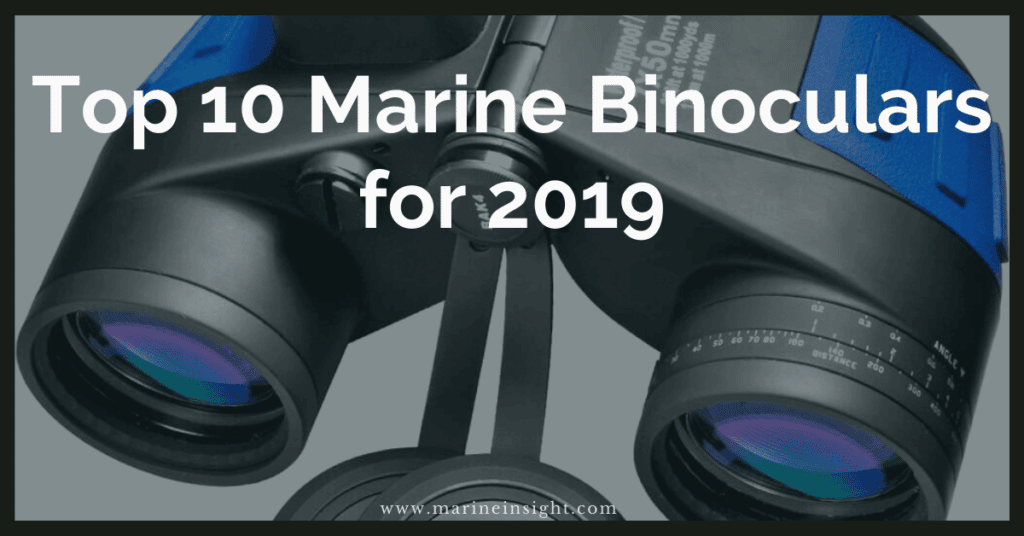

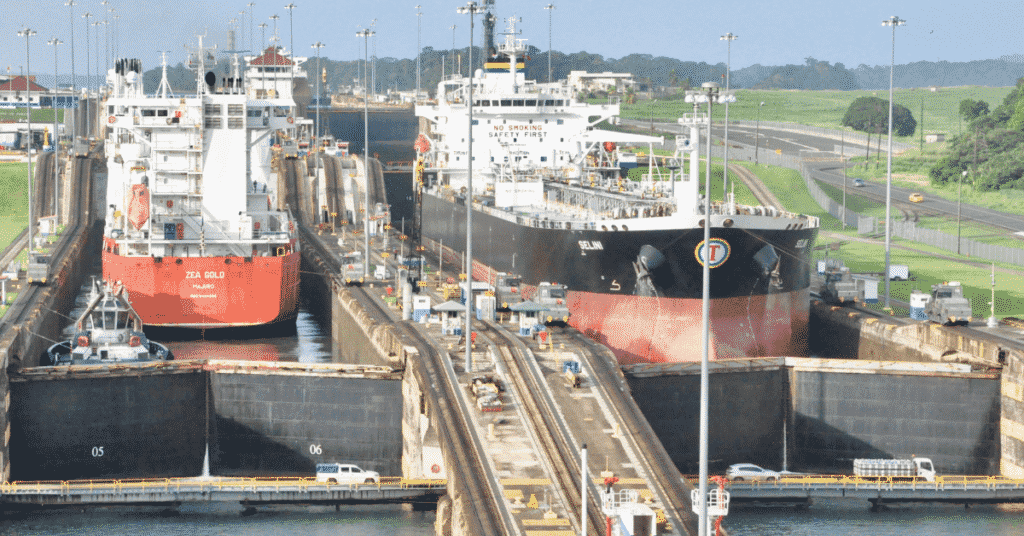
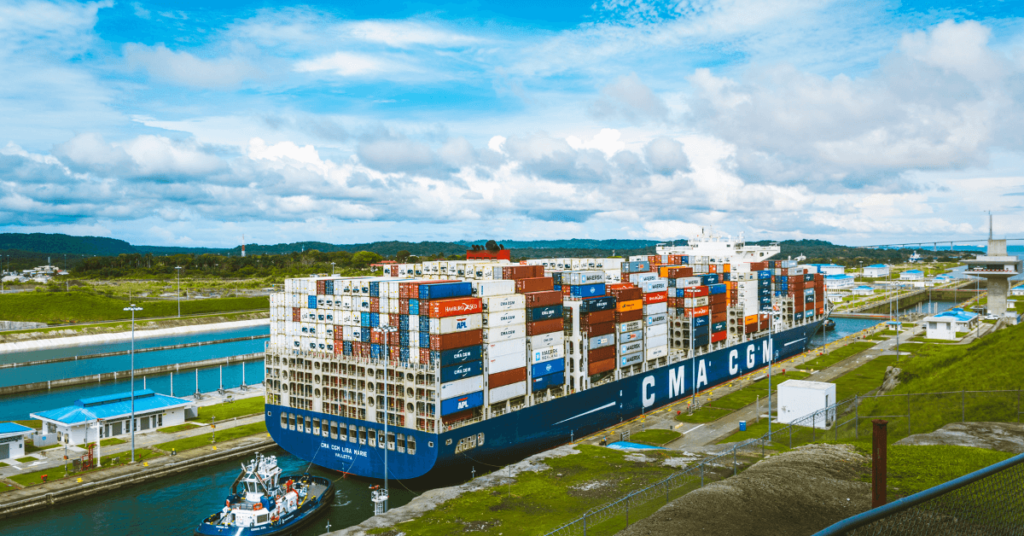


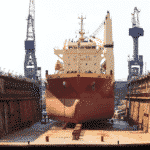


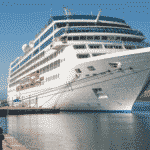







I’m Anabelle. I work in an Insurance Company located in Mauritius. I’m interested to have information to benefit the market, even as insurer or insured.
@Anabelle: Please do check this article on ship insurance: https://www.marineinsight.com/maritime-law/different-types-of-marine-insurance-marine-insurance-policies/
Thanks for mentioning that barge carriers have flat bottoms and are commonly used in the transportation of heavy goods. The company I work for wants to expand our service area and will need to find a product handling service to help with the transportation. I’m glad I read your article so I can do some further research about barge transportation and see if it’d be a good option for us.
hello.it was so useful for me i have a question how can i have a pure car carrier except money
what degrees i need and what is my first step
please guide me
thank u
please send answer to my email
Hlo sight…I also want to join the merchant navy and I had finished my studies..but my academy is fake they send me here in samoa for fishing now I’m stuck,& I gave slots of money to my academy, now I nothing understand what I do in my life ,after 5 month m contract gonna finish!how I find the good academy?:(
@Sandeep: Once you are back, report it to DG shipping. Always choose that academy which is approved by DG shipping and provide sponsorship in FG ships.
Where is the reefer ship under?
Nice from Tanzania..this post it helps me in my studies here in Tanzania..thnks all
It’s very helpful for the fresher as well as seafarers. It’s really gives brief information. Thank you.
Am welder looking for shipping work, what can I do to get the the ship work? Help me to get the ship.
@Davis: Glad the article is useful. Good luck 👍
Thanks for sharing.
There are good ships and wood ships, ships that sail the sea, but the … See All Comments. Here are some other inspiring